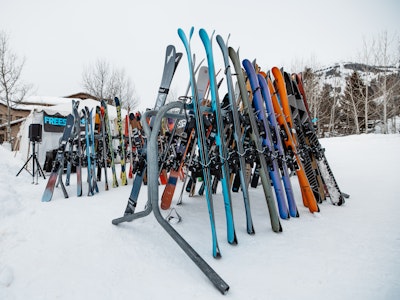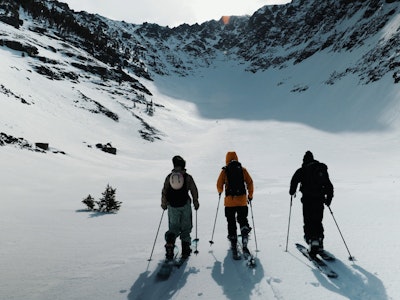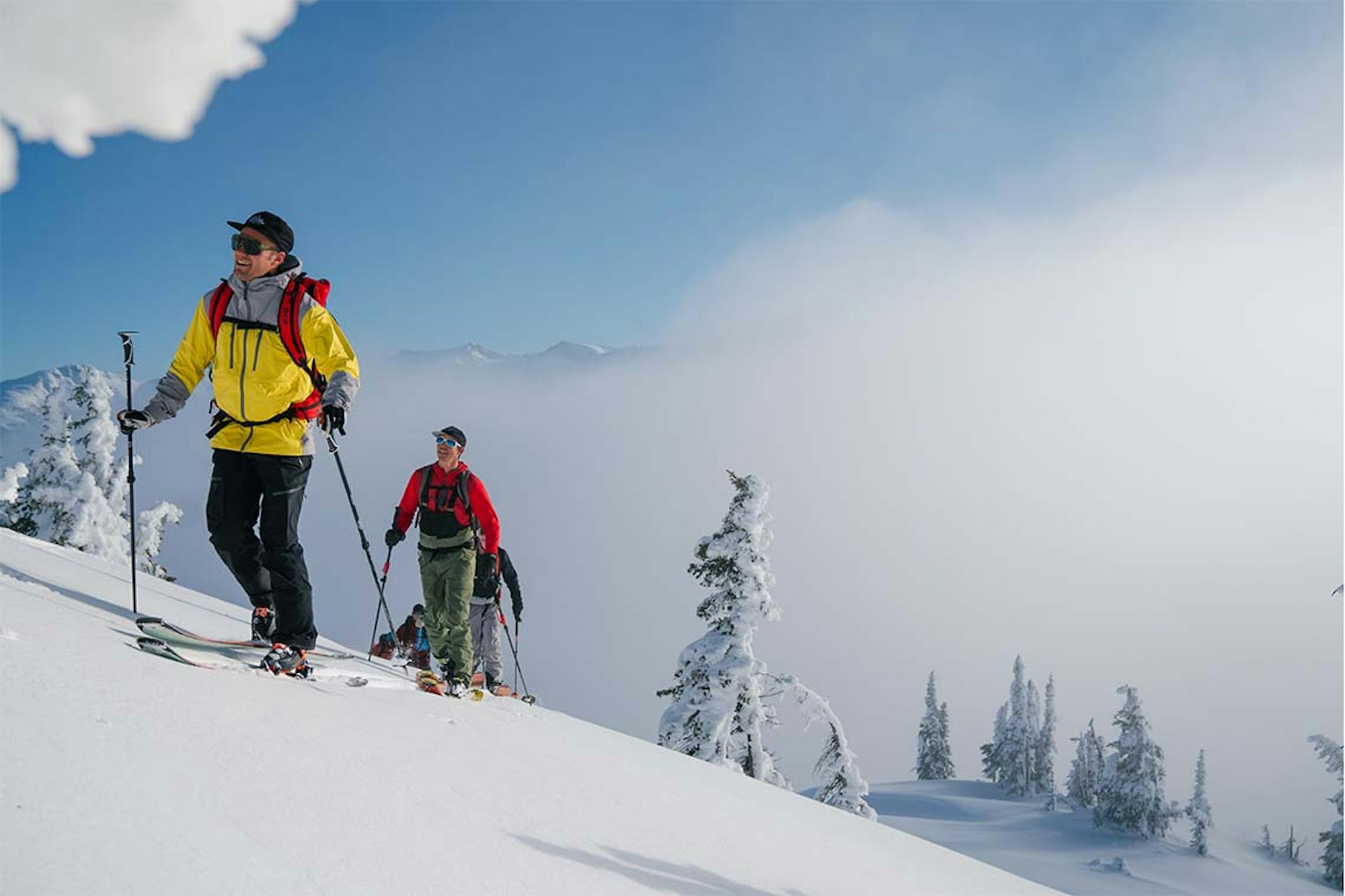

Photography by Zoya Lynch
Born and raised in a guide family, Marty Schaffer spent the majority of his childhood at a backcountry lodge southwest of Revelstoke. Early and abundant exposure to the mountains inherently inspired Schaffer to become a certified Association of Canadian Mountain Guides (ACMG) ski guide over 12 years ago. In the process, Schaffer recognized he had his own style of guiding that wasn’t being offered at any of the operations in Canada. Traditionally, guides do the leading and guests dutifully follow but Schaffer believes in a more collaborative approach with his clients and therefore, started his own guiding operation, Canadian Powder Guides, commonly referred to as Capow. Having owned and operated Capow for a decade now, we caught up with the Backcountry Access ambassador to get his top ten tips to make traveling in the backcountry a safe, fun and downright enjoyable experience. Keep reading for a few chunks of wisdom from one of Canada’s finest, in no particular order of importance.
Pick your partners wisely
Your mom was so concerned about you hanging with the right kids… in the backcountry, this couldn’t be more important. Having a team that knows how to stimulate the conversation, can throw their ego aside and manage their desires [is important]. It’s about not getting hurt in the first place and having your team dialed. The key part is if shit does hit the fan, you’ve definitely got to have a crew that you can trust. A crew that is taking it seriously on rescue practices, a team that is calm, cool and collected when it’s time to actually push send on a rescue and bigger picture thinking, like how to call for help and how to extricate. You might have friends that are great shredders but might not necessarily be the best touring partners. This is why girls are so great in the backcountry—they know how to talk about their feelings, they listen to their intuition, they are able to put their egos aside.
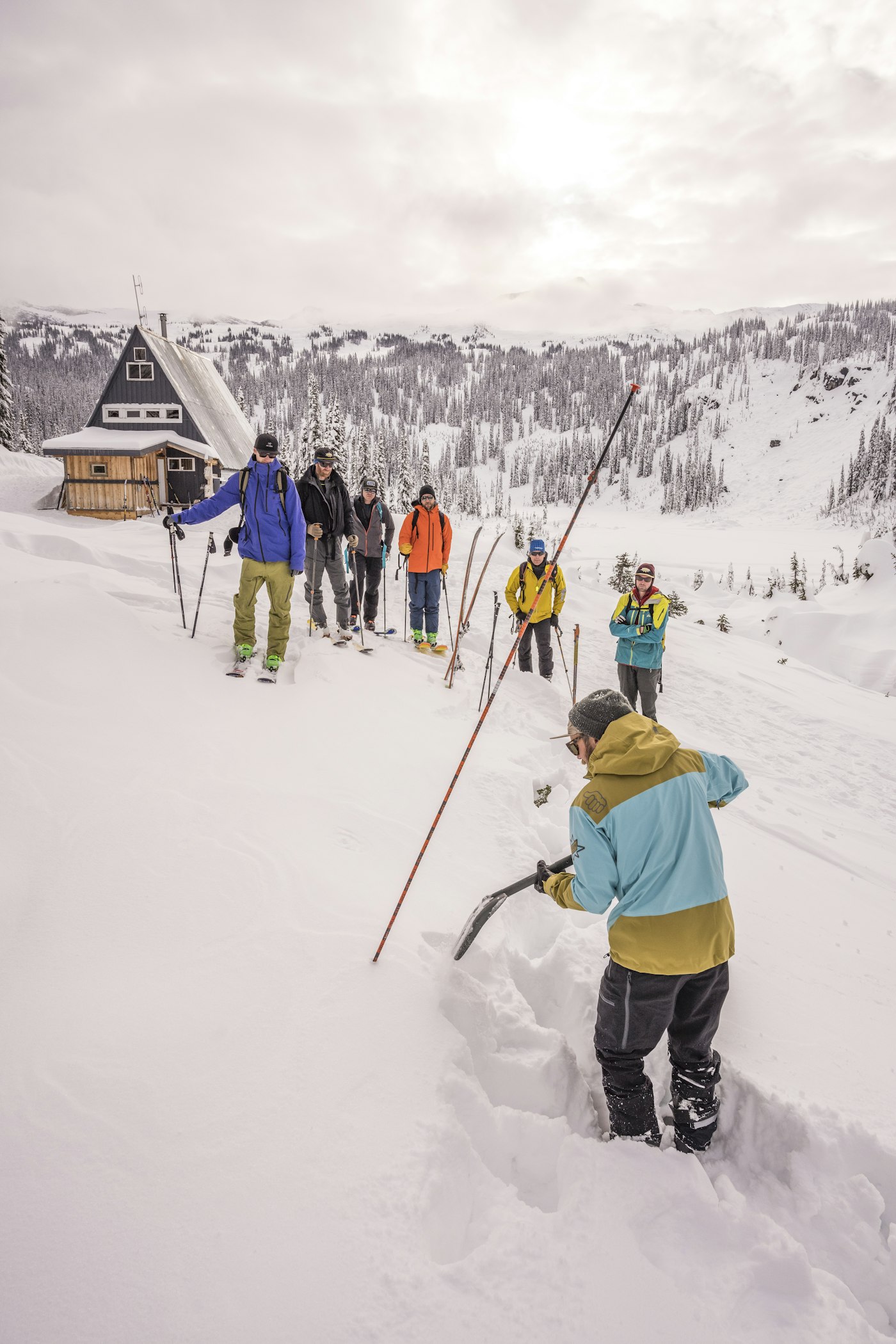
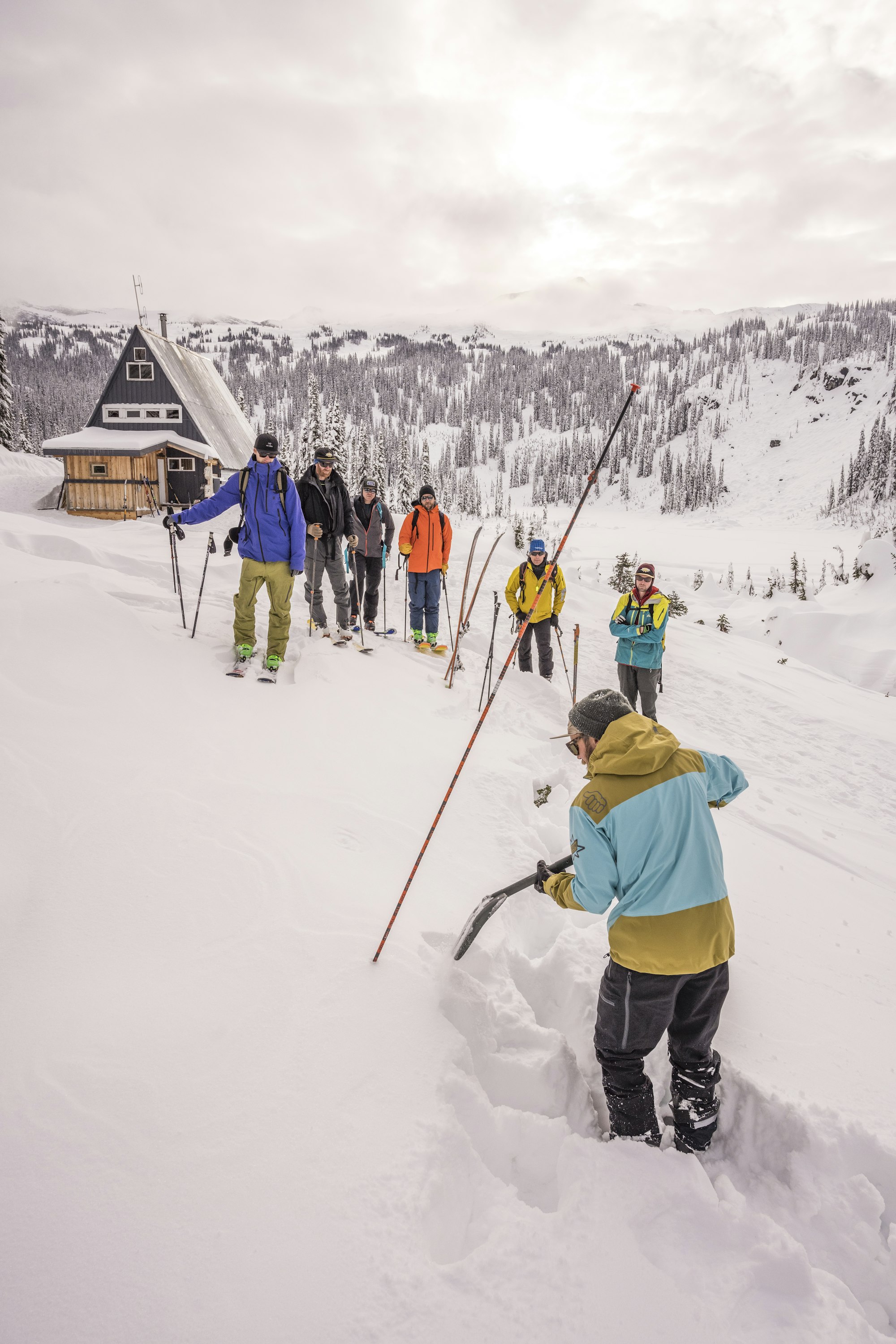
Schaffer digs a pit for clients to assess the snowpack.
Practice your hard skills
We’re never going to be perfect avalanche forecasters, snow science is always going to be inexact. Over years of experience you’ll learn how to move through terrain but that takes so much time, so much mentorship. Anyone can pick up a transceiver, anyone can be really good at probing and everyone can be dialed on shoveling. Those hard skills are such a gimme in that you can practice them anywhere. You can practice them in the field, you can practice in the slackcountry next to the ski hill. I think it’s totally unacceptable to be ski touring multiple days in a row and not have these rescue skills as second nature. Because when shit does hit the fan, there are so many other variables going on that it should be second nature to follow the transceiver and do a really good top-of-snow check, you should be able to put your backpack down at the right spot and pull your probe out and put it together and once that probe hits, not only do you have the strength to shovel but you’re dialed on the technique. We don’t do enough shoveling in the industry, shoveling is truly what’s going to get your friend out of the snow so it’s almost muscle memory, training to shovel. Those things are a gimme.
Understand how to travel through terrain
Like I said, there’s no such thing as a perfect avalanche forecaster. Nobody can point up at a slope and know that it’s going to slide or not and snow science is always going to be inexact. It is the best terrain practices that will keep you alive. That’s being diligent at crossing slopes one at a time, always skiing with eyes on. Terrain is the only constant, the one thing that you can control. If you don’t want to get caught in an avalanche, just don’t go into avalanche terrain. Avalanche conditions can be terrible but if you’re walking across the flats, it doesn’t matter. Being an avalanche forecaster won’t save your life, best terrain practices do.


Schaffer proudly displays his BCA Tracker 4 avalanche transceiver.
Have all of the proper safety gear
Always have a modern, three-antenna transceiver. Anything that is not three-antenna is negligent because you’re not going to be able to search at as high of a level. However, it’s more important to have good search technique than it is to have a device with all of the bells and whistles. BCA’s Tracker 4 has a super fast processor and it’s simple to use, so you can focus on the search versus all of the gadgets. I’m also quite passionate about having a long probe, I have a requirement for everyone to have a 300-centimeter probe. It doesn’t matter what snowpack you’re in, if there’s enough snow to fully bury someone there’s enough snow to bury someone more than 200- or 250-centimeters deep. BCA’s Stealth 300 Avalanche Probe is a great choice. As for a shovel, it must be metal and the handle must be extendable. Specifically, I’m a huge fan of BCA’s hoe-mode shovels.
Pack extra food
I never finish a day having completely finished my food. There’s always power gels or shot blocks in my pack because it not only helps with energy but when your energy is bonking that’s when you can make really poor decisions, so bring food that you’re inspired to eat and a lot of it.
Opt for warm liquids to stay hydrated
I just love the idea of warm liquids because you can add snow to make your water go further. Things like miso soup really help because of the salt. But I think it’s important to have liquid either with electrolytes or salt, not just water. It’s hard to drink water when it’s cold out, so whether it’s a thermos full of hot tea and a cookie or something else, that’s the way to do it. Cold water is the last thing I bring, it’s super hard on the system. Luke-warm or even warm tea is the way to go because it inspires you to go through all of your liquids. Worst-case scenario you can add snow to a thermos to melt for water if you have to spend the night.
Ski straps fix everything
A ski strap is better than duct tape in cold weather. You can really cinch it down and adjust it on the fly. A ski strap fixes everything, it’s mandatory for a toboggan build or say your boot or binding broke. I actually have two wrapped around my pole or backpack, two wrapped around my first aid kit and then I’ve got two inside my backpack—so minimum six, if not eight. If you have to get creative, ski straps are the most important thing other than your safety gear.
Be prepared to start a fire
I always bring a snow saw that can cut wood, especially in North America. It’s also key if you need to build a heli pad or something like that, I always have something that can cut wood. I also always carry a bike tube, I’m a big mountain biker in the summer and I think a bike tube is basically free and a great little fire starter.


Schaffer leading his clients to the goods.
Make a plan before you drop in
We all learned how to ski inbounds, where pleasure comes first but in backcountry skiing you always have to be tuned in with a plan, like where your escape route or where your safety zone is. The first three turns at the top of your line are where you get all of your weather input— that’s where you get most of your wind loading and the top of the slope is normally the steepest, so it’s vital to always have eyes on [the person dropping in] and have an escape route.
Reaction time is critical
If an avalanche does initiate, you need to have a plan of where that safe zone is. Whether you go to the highest point of terrain or whether you ski down to the bottom, you and your group should discuss where to gather in a designated safe zone out of harm’s way. In my opinion, it’s more important to react quickly than to focus on your airbag trigger. Instead of just sitting down in an avalanche and expecting the airbag to pop out, those first couple seconds after an avalanche initiates, it’s best to keep your speed up and get off the slide.

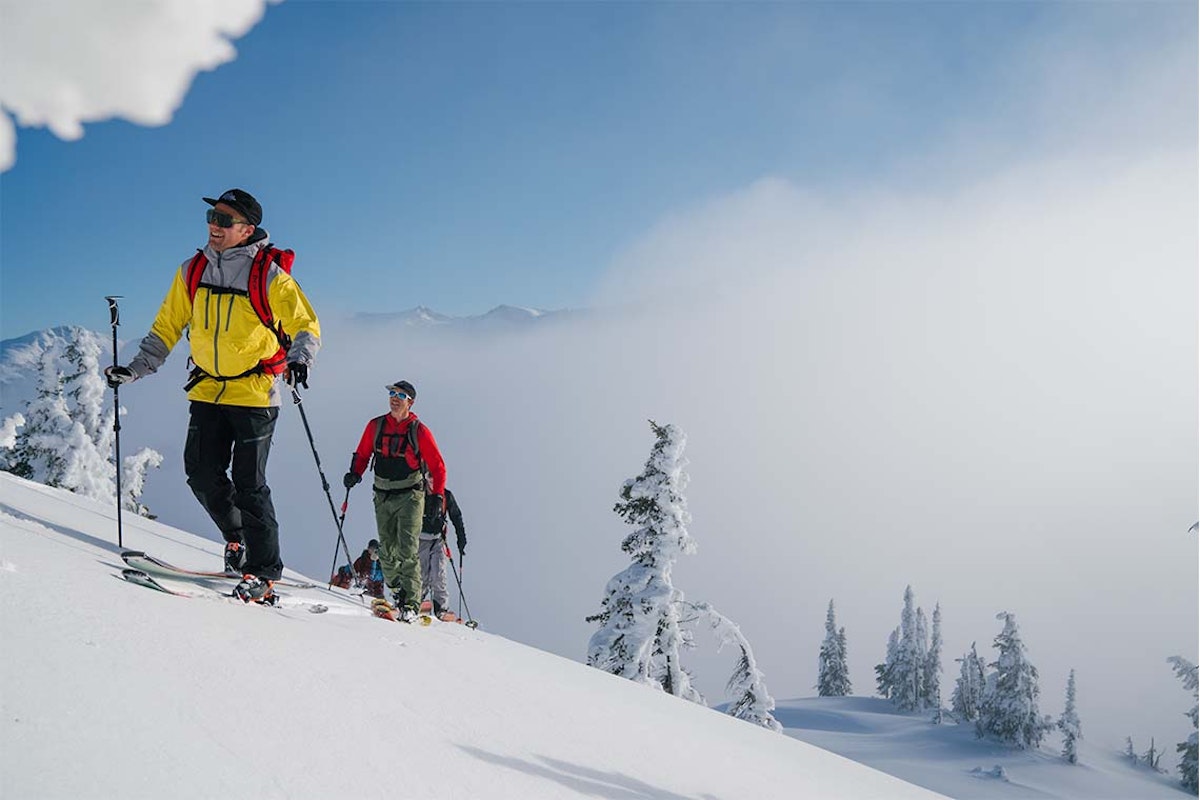
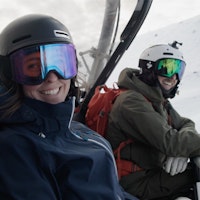
![[GIVEAWAY] Win a Head-to-Toe Ski Setup from IFSA](https://www.datocms-assets.com/163516/1765920344-ifsa.jpg?w=200&h=200&fit=crop)

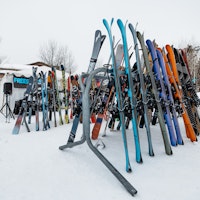
![[GIVEAWAY] Win a Legendary Ski Trip with Icelantic's Road to the Rocks](https://www.datocms-assets.com/163516/1765233064-r2r26_freeskier_leaderboard1.jpg?auto=format&w=400&h=300&fit=crop&crop=faces,entropy)
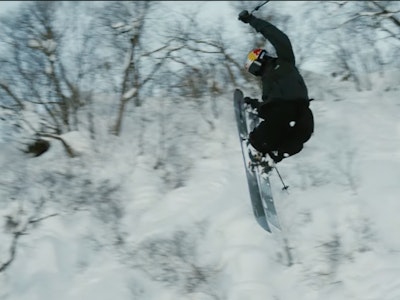

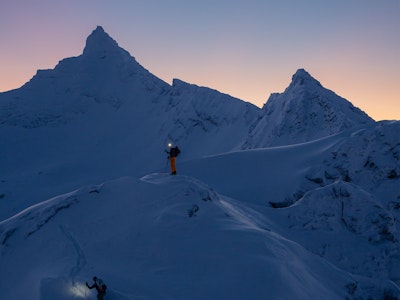
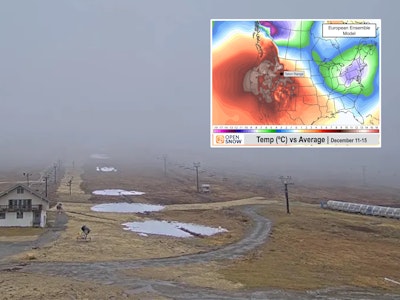
![[GIVEAWAY] Win a Head-to-Toe Ski Setup from IFSA](https://www.datocms-assets.com/163516/1765920344-ifsa.jpg?auto=format&w=400&h=300&fit=crop&crop=faces,entropy)
